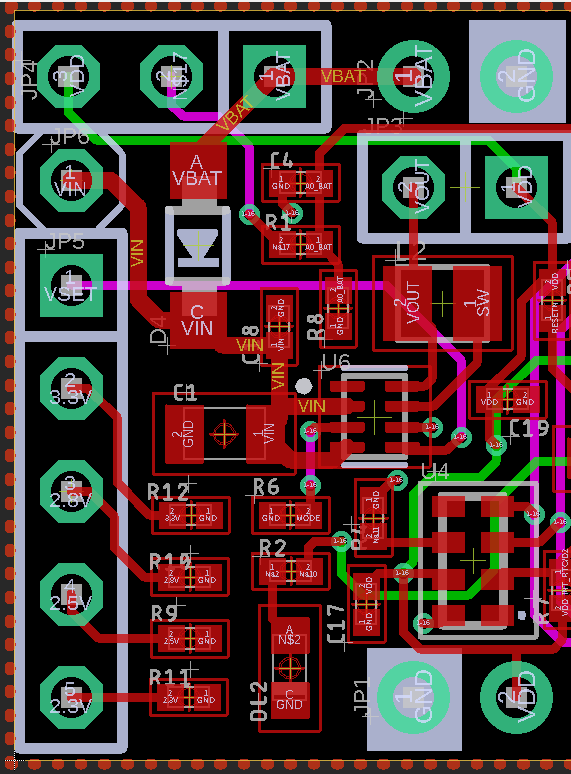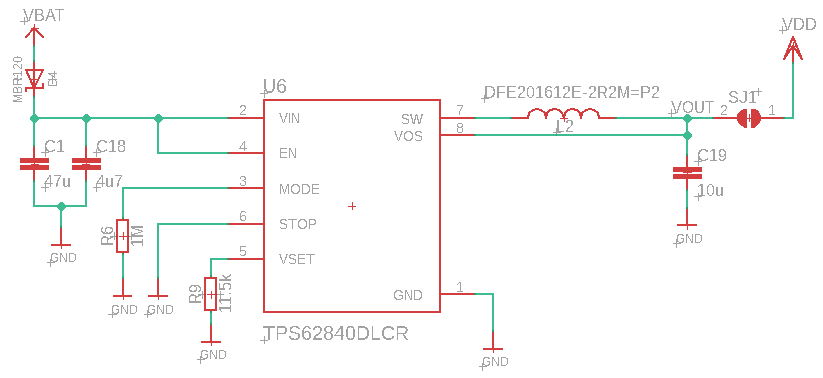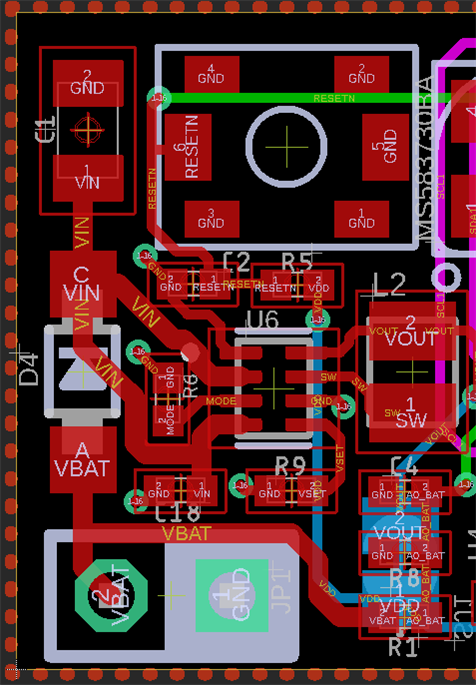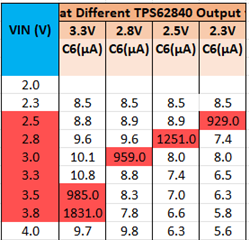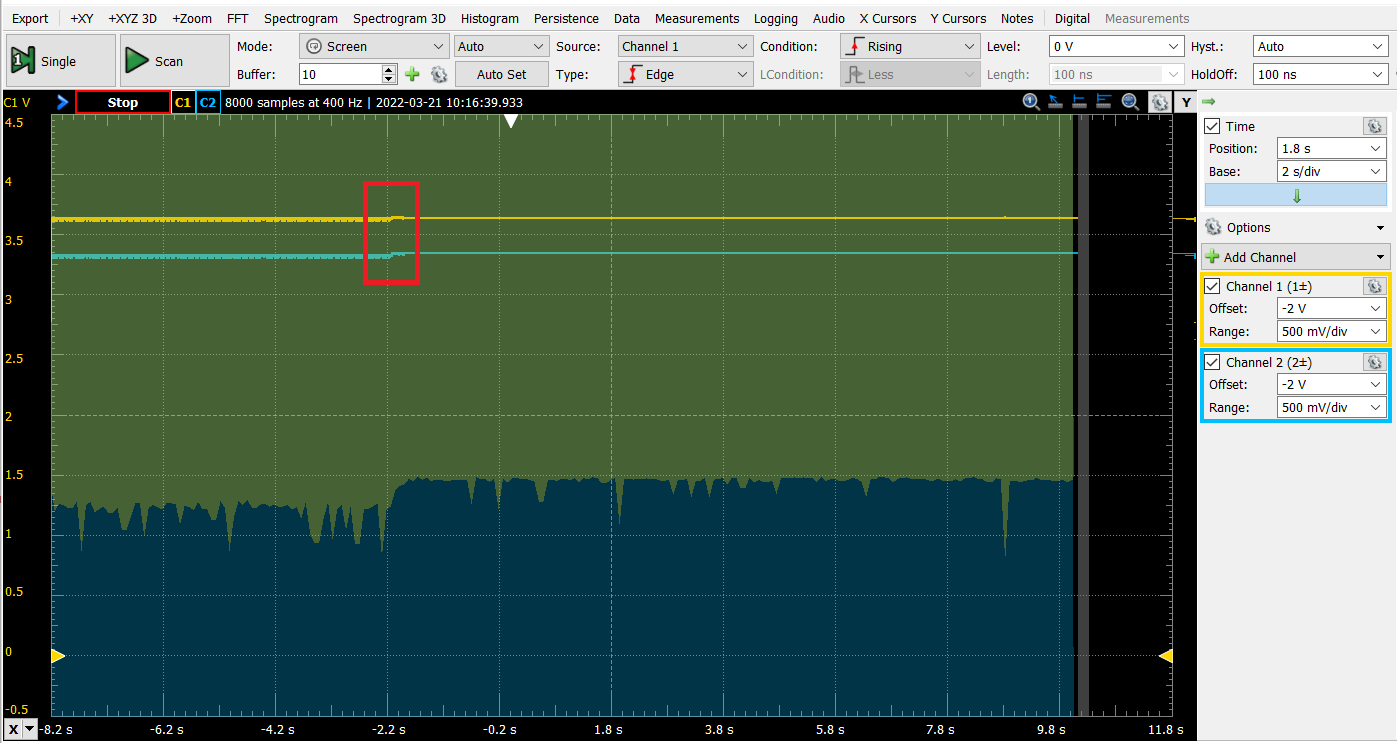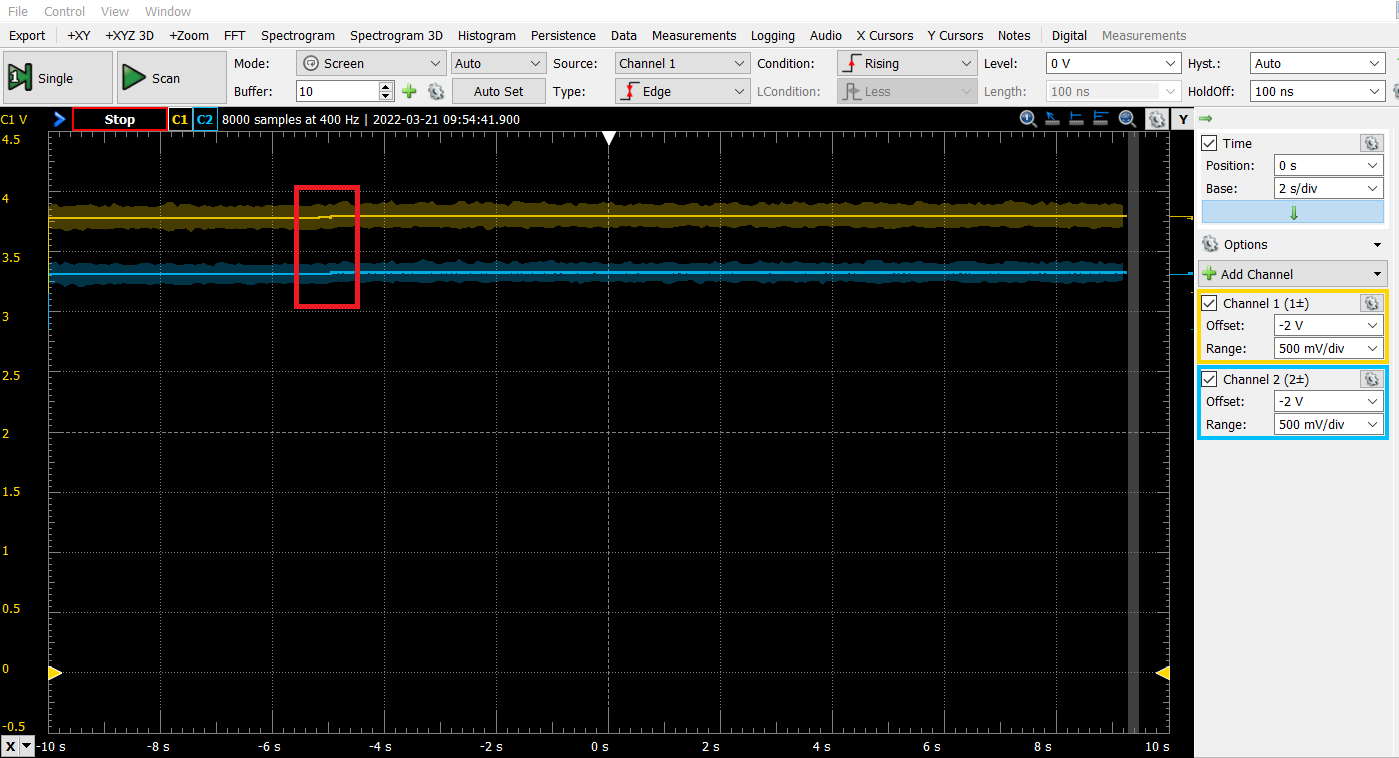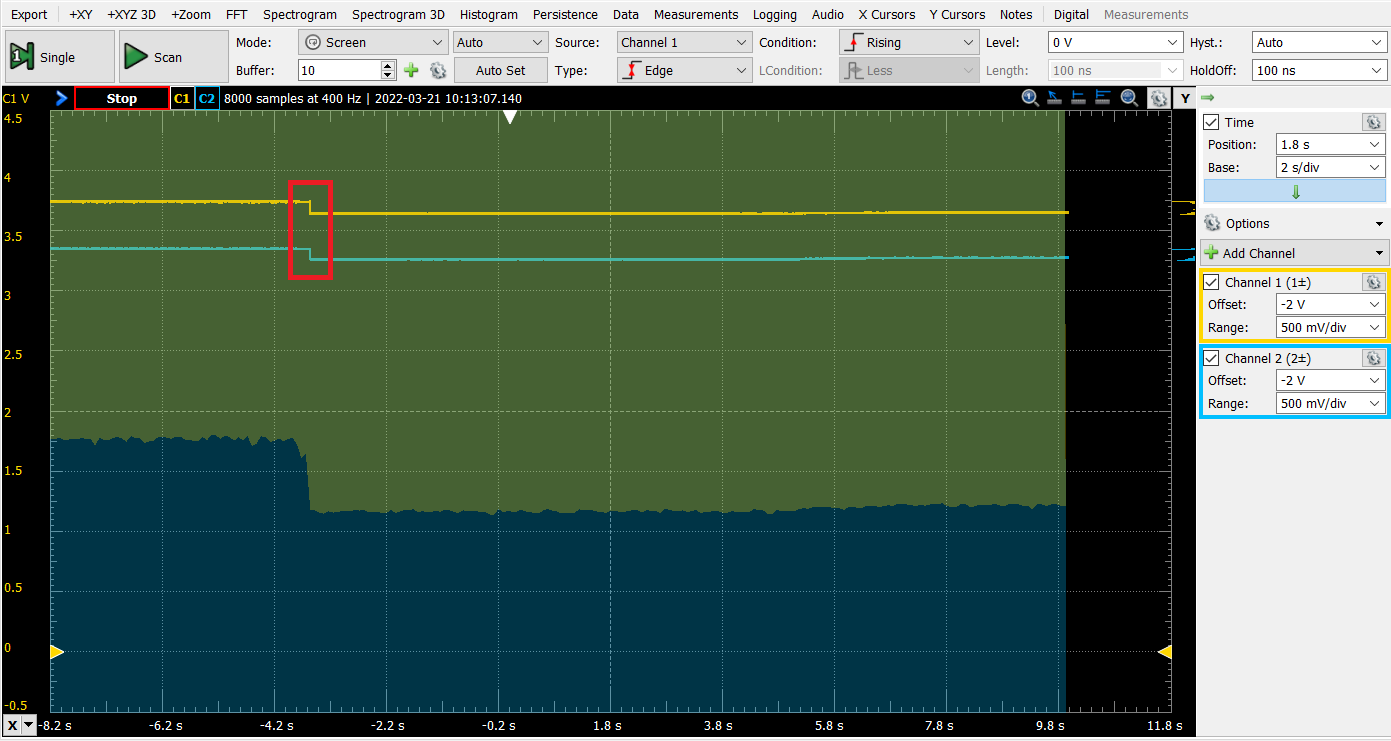Hi,
We want to use TPS62840 to convert the battery voltage to a fixed 3.3V or 2.5V to supply power for our load (an ARM-based processor). I used the TPS62840 evaluation board (TPS62840-1DLCEVM55) and it works very well with ultra low power consumption when the load current consumption is very low (several microamps). When I designed a circuit according to the TPS62840-1DLCEVM55, it works but the power consumption is very high when the input voltage is a little higher than the output voltage.


The left table shows the current measured by our designed board, the right one shows the TPS62840-1DLCEVM55 results.
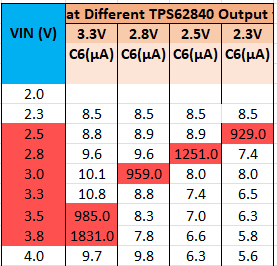
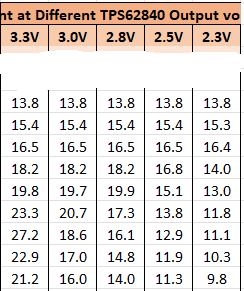
When we used the TPS62840-1DLCEVM55, the mode are selected as follows.

I confirm that the load state keeps absolutely same when we tested with thest two boards. The customer service suggested me to post my questions here. Could you kindly give some professional suggestions or comments to help achieve ultra low power consumption with this DC/DC converter? Thank you very much.




